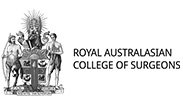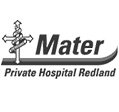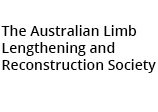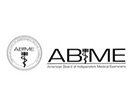Endoscopic Anterior Cruciate Ligament Reconstruction
Anterior cruciate ligament reconstruction is one of the most commonly performed knee operations. The aim of the surgery is to stabilise joints that are at risk of collapsing under a load. Studies have shown that joint stabilisation reduces meniscal and articular cartilage damage, which is linked to a reduction in the incidence and severity of later osteoarthritis.
Surgical techniques and post-operative management protocols have advanced greatly in the last decade. In the past, patients have not always complied with traditional protocols. The response has been to develop accelerated rehabilitation protocols and are defined here as immediate full weight bearing, immediate full extension and immediate active and passive mobilisation of the knee joint.
As the accuracy of surgical techniques has improved, invasiveness has decreased, and the use of arthroscopic techniques has reduced the incidence of post-operative morbidity. These advances have allowed fewer and shorter stays in hospital for a wider range of patients who require joint stabilisation. Studies have shown that post-operative morbidity is reduced with an accelerated rehabilitation protocol, regardless of the surgical technique used.
Surgical Procedure Outline
Arthroscopic surgery removes the torn anterior cruciate ligament stumps and any related meniscal surgery is carried out. Any articular cartilage damage or disease is recorded by the surgeon, to inform the post-operative management protocol.
An autologous graft is harvested from the mid-third patella tendon or semitendinosus and gracilis tendon. The graft is prepared and placed with the joint in an isometric and anatomic position – this will allow a full range of motion without unduly stressing the graft. Currently, grafts are fixed using interference fit screw fixation, endobutton and suture and post fixation techniques. Experimental studies have shown that these techniques have enough immediate rigidity to permit an accelerated mobilisation program. Many patients have the surgery on an out-patient basis in day surgery, and the physiotherapy regime is often commenced the following day.
Arthrofibrosis is often seen in patients who undergo acute anterior cruciate ligament reconstruction or who have concomitant capsular and collateral ligament damage. These patients report a “springy” restriction in their movements, with capture to the patella. Aggressive active and passive mobilisation improves this type of restriction. In comparison, non-isometric graft placement leads to a swift return of a limited range of motion with lower terminal extension or flexion – a solid block prevents further movement. The joint is usually stable to the Lachman’s test and pivot shift. The graft constrains the joint and further mobilisation would damage the graft. (Full range of motion could be achieved by graft rupture, but would cause instability or joint damage due to compression of the articular surfaces.)
Goals of Physiotherapy
Ideally, physiotherapy should begin pre-operatively. Healthy, pain free and mobile joints recover far quicker than painful ones. Even chronic injuries respond better when pre-operative assessment and “programming” have been carried out. In our experience, patients who have learnt the exercises pre-operatively find the post-operative exercises much easier. As mentioned above, many patients now choose to have their procedure carried out in a day surgery as out-patients. Their physiotherapy begins the same day in the acute post-operative stage. Over the following three to six months, the treatment goals are as follows:
- To diminish post-operative pain and swelling. Pain and swelling occurs in the joint itself with post-operative effusion and quadriceps inhibition and also in the donor site, be it the patella tendon or the hamstring tendon
- To restore a full range of motion
- To restore muscle tone and strength
- To maintain and develop aerobic conditioning
- To achieve proprioceptive retraining, which facilitates a return to sport and work as swiftly and safely as possible.
It is essential that the patient take ownership of their rehabilitation and is made aware of the work involved.
The rehabilitation is not a strict prescription and should be changed for the patient’s particular circumstances, which include:
- Their age
- Any associated pathology such as meniscal suture, meniscectomy, osteoarthritis, chondral damage, osteoplasty
- Any acute or chronic injury, whether it is associated with collateral ligament damage or not, making brace immobilisation necessary.
Program Design
This program has been designed using the following information regarding anterior cruciate ligament reconstructive surgery.
- The advantages of early mobilisation include the retention of bone mineralisation, the maintenance of articular cartilage nutrition and the prevention of arthrofibrosis. Braces should aim to obtain full extension, if they are used.
- Progressive controlled loading of the graft will stimulate collagen healing and regeneration. Provided that the graft is placed in the correct isometric and anatomic position, it is very difficult to overload it.
- Pain permitting, rapid progression to full weight bearing should be allowed. Weight bearing has not been shown to damage the graft.
- The technical aspects of the procedure results in immediate graft fixation sufficient to allow aggressive mobilisation. Over time, the attachment will grow stronger as it “ligamentises”. There is an assumption that the graft is probably never as strong as the day it is implanted.
- Results from kinematic research show that open chain exercises create more force on the graft through anterior tibial displacement than closed chain activities.
- Loss of the anterior cruciate ligament’s function through injury also damages the joint’s mechanoreceptors. Emphasis must be placed on proprioceptive retraining in preparation for a return to unrestricted sporting activities.
The physiotherapy is a five-step process, from surgery to a return to work and sport.





















